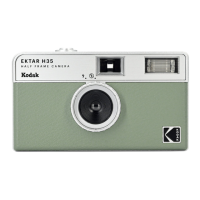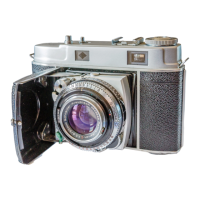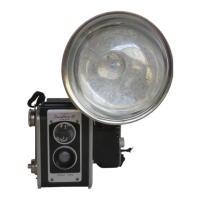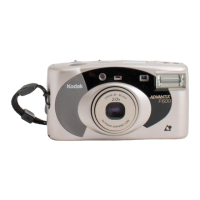ing
will
give overexposure.
The
exposure can be further reduced
either
by
using a filter,
by
using a smaller
shutter
opening,
or
by combining
both.
For
example,
it
is desired
to
photograph
clouds
at
8 frames per second
to
make
them
appear
to
move very rapidly.
If
the
camera is pointed
at
the
sun, and
if
the
outline
of
the
sun can be seen
through
the
clouds,
overexposure
will
result
at
this
slow
camera speed. Here,
the
smallest
diaphragm,J.16,
the
CK-3 color filter, and
the
smallest
shutter
open-
ing,
74'-OPEN,
will
be required
to
cut
down
the
exposure.
FOR
SHARP
IMAGES:
Sharp images
of
rapidly
moving
objects
(races, waterfalls,
etc.)
can be obtained
by
using fastest camera speed
1\
(64) and smallest
shutter
opening
C74'-OPEN).
The
exposure time is
I reduced
to
a minimum, necessitating good
light
and a fast lens.
FOR
BLURRED
BACKGROUNDS:
It
may
be desired, in certain in-
stances,
to
emphasize
the
subject in
the
foreground
by
throwing
the
background out-of-focus. This can be done
by
using a larger
diaphragm
in
the
lens
to
decrease
the
depth
of
focus and reducing
the
shutter
opening
to
avoid overexposure.
MASKS
A
SET
of masks
is
supplied
with
the
Cine-Kodak Special (Figure 32).
Those
that
produce various picture shapes,
the
oval and round masks,
can be used
with
the
camera hand-held. A
short
plug
is supplied
to
pro-
.......
tect
the
MASK
~
.
4
~
..
tf'
!"
~
.
~~
@
::r;';;~!U;~I~:
~
~
might
occur
if
.
light
shines di-
rectly
into
the
Fig.
32
mask slot.
Insert
the
plug
with
the
small depression
in
the
top
towards
the
front
of
the
camera. When inserted backwards,
it
interferes
with
the
reflex finder.
Keep
the
plug
in
the
mask slot,
whether
the
film chamber is on or
37
